Year 9 Substitution Worksheets
Substituting into Expressions (A)
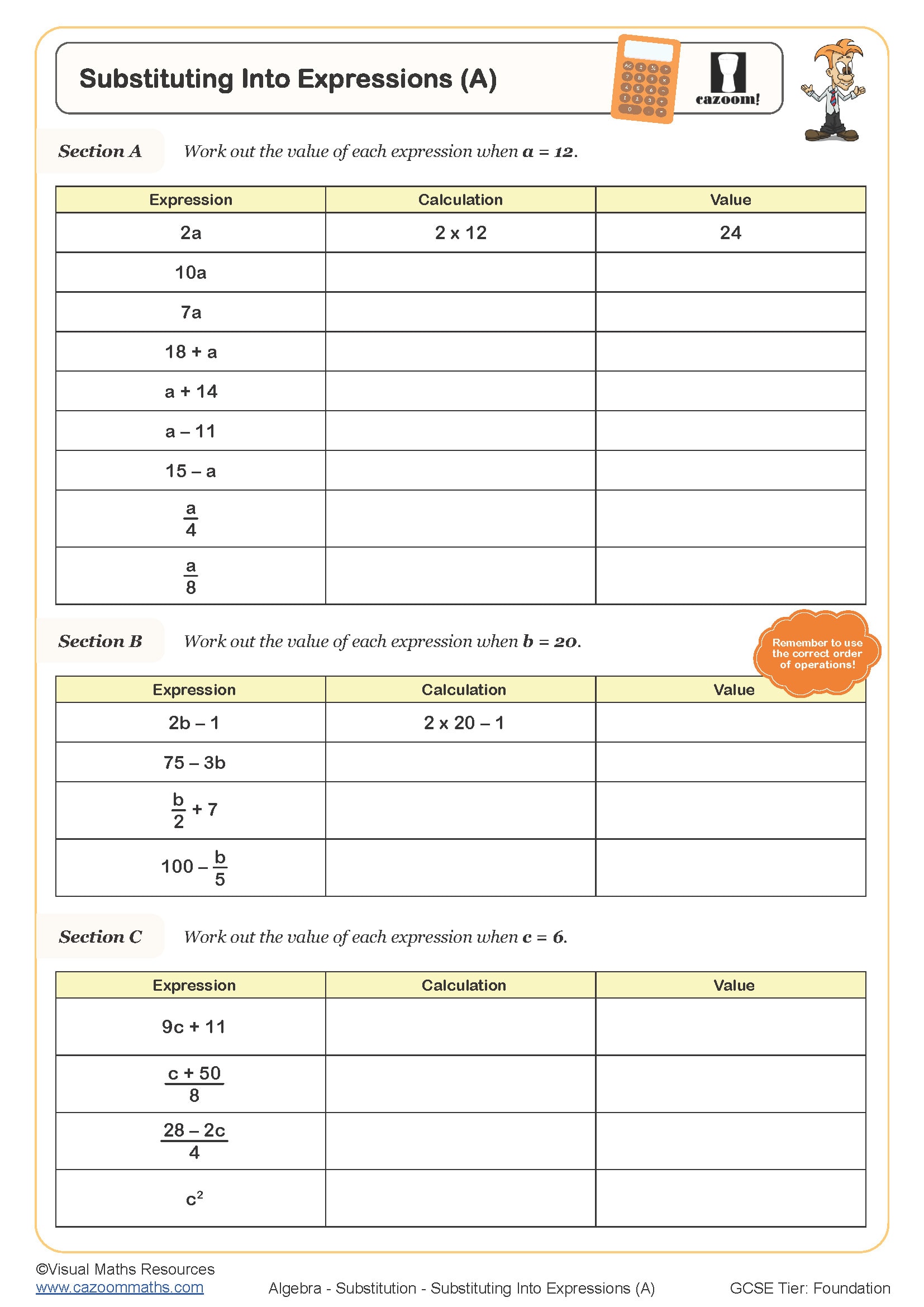
Substituting into Expressions (B)
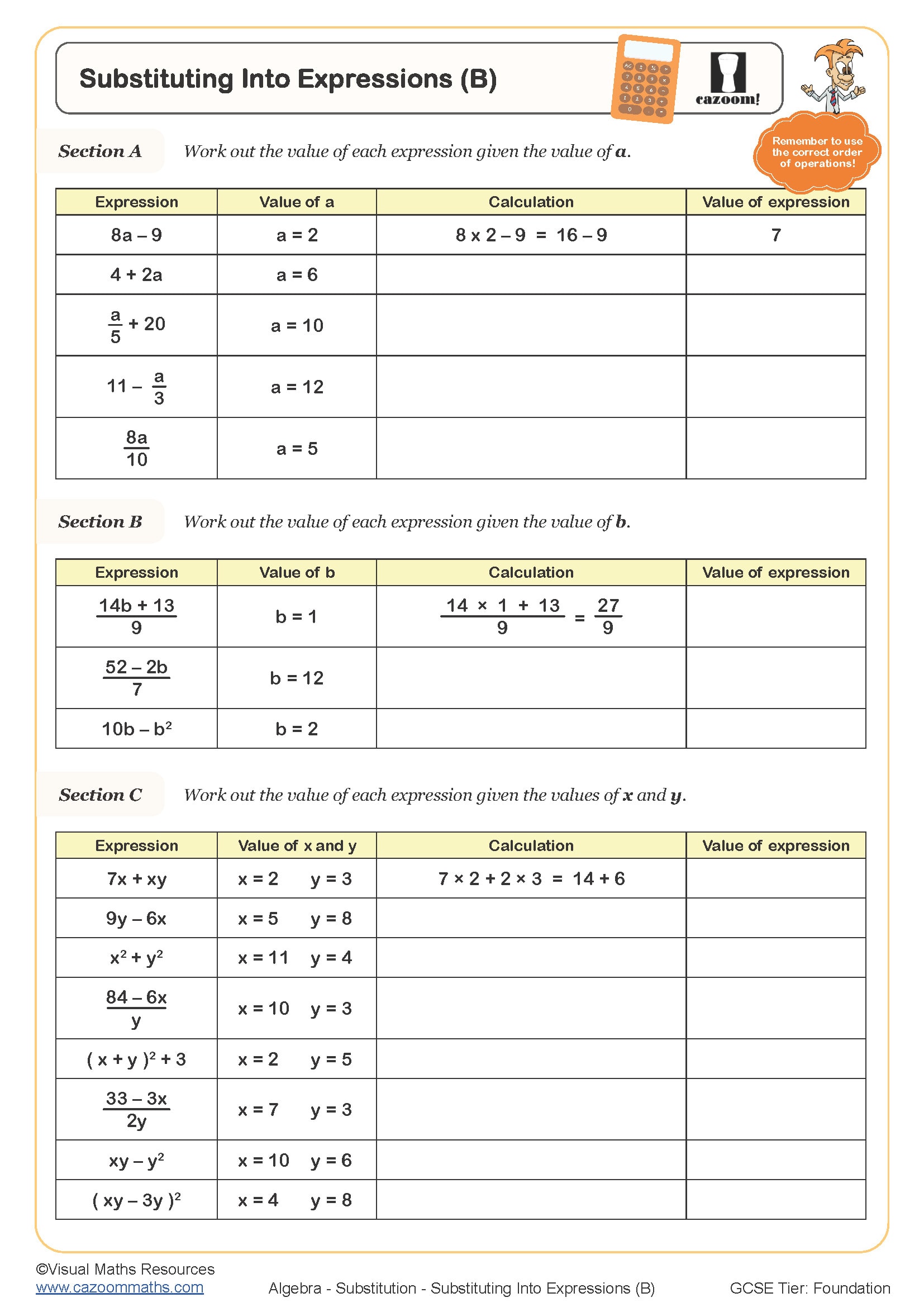
Substituting into Expressions (C)
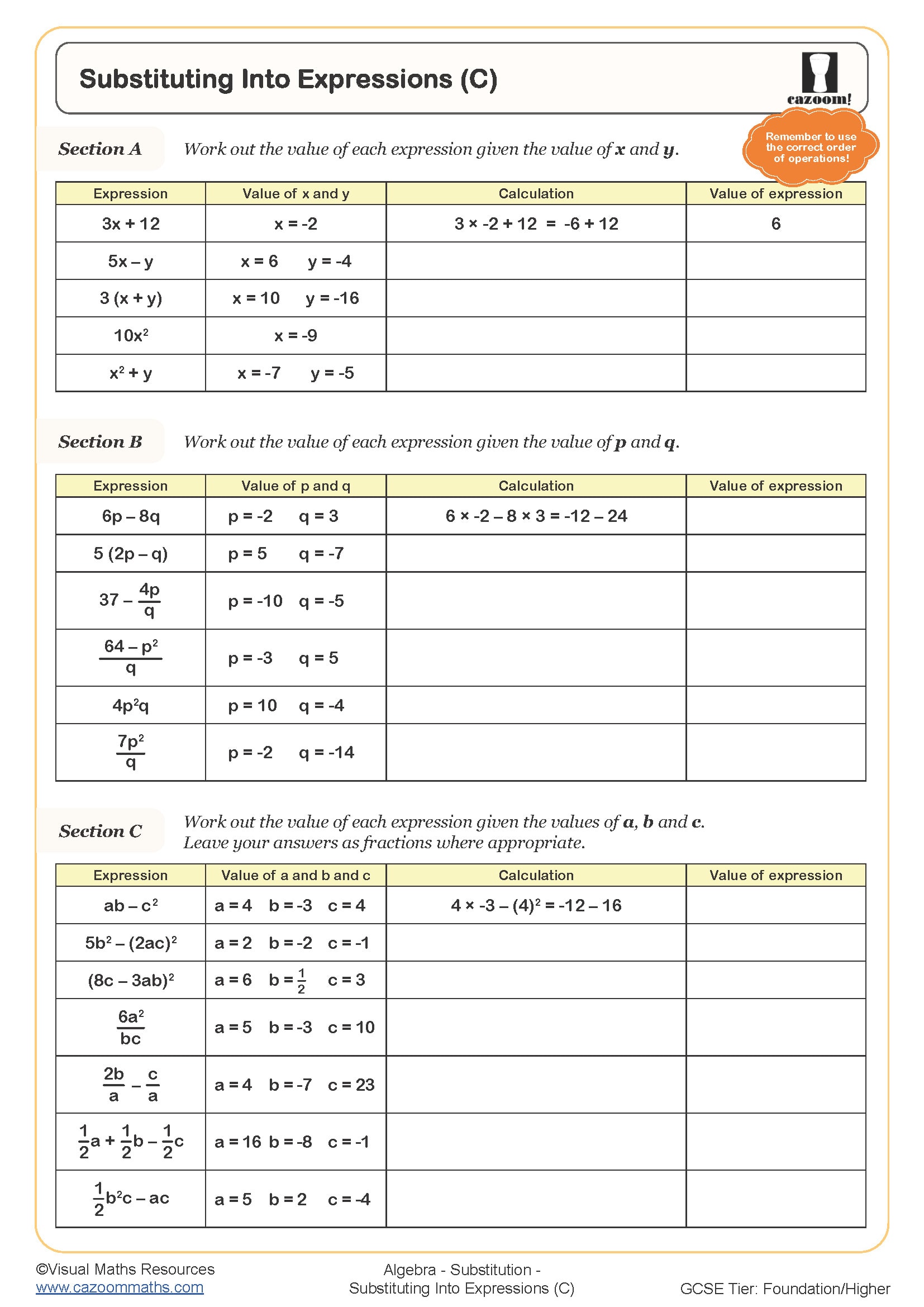
Substituting into Expressions using Negative Numbers
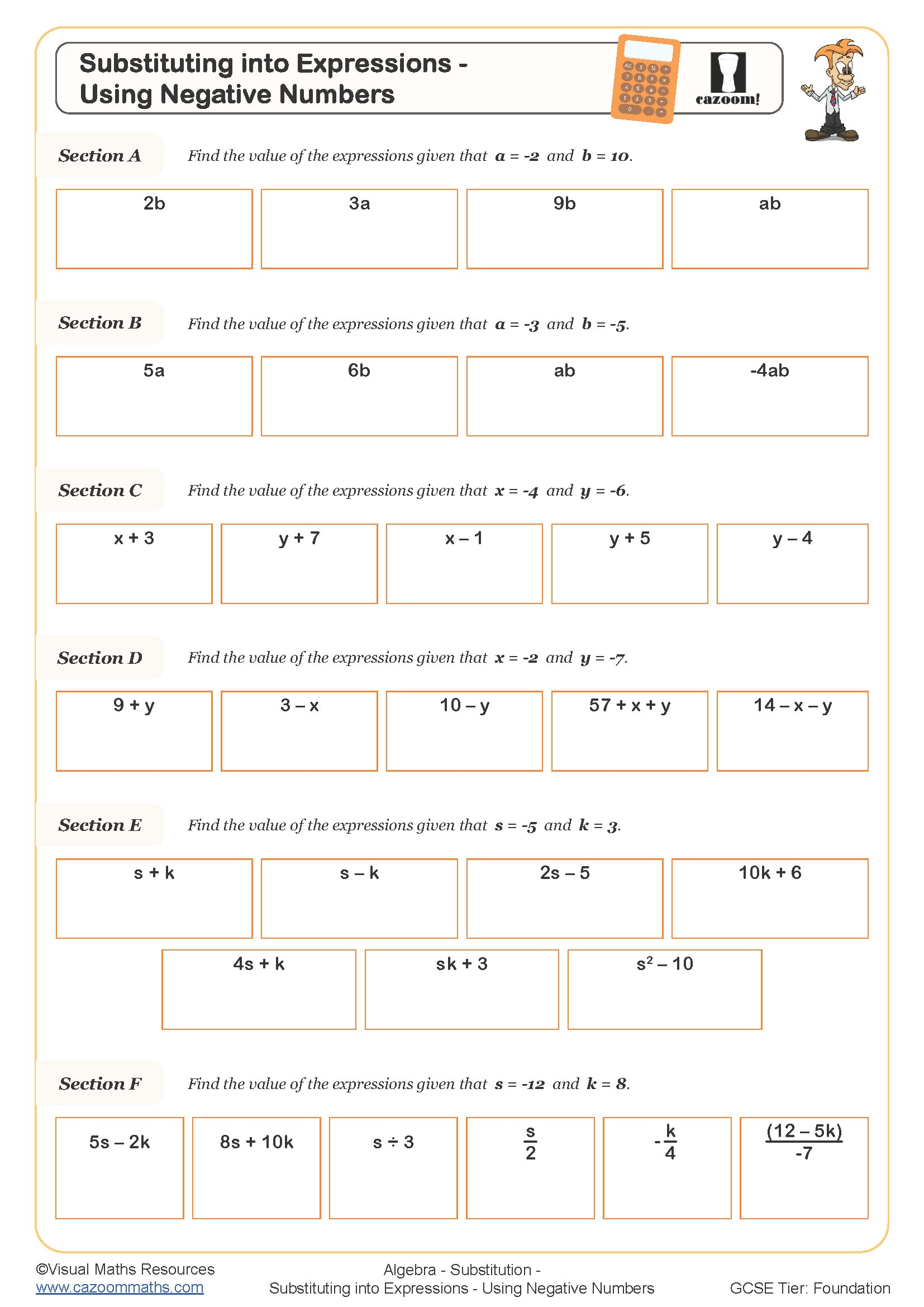
Substituting into Formulae (A) (With Clues)
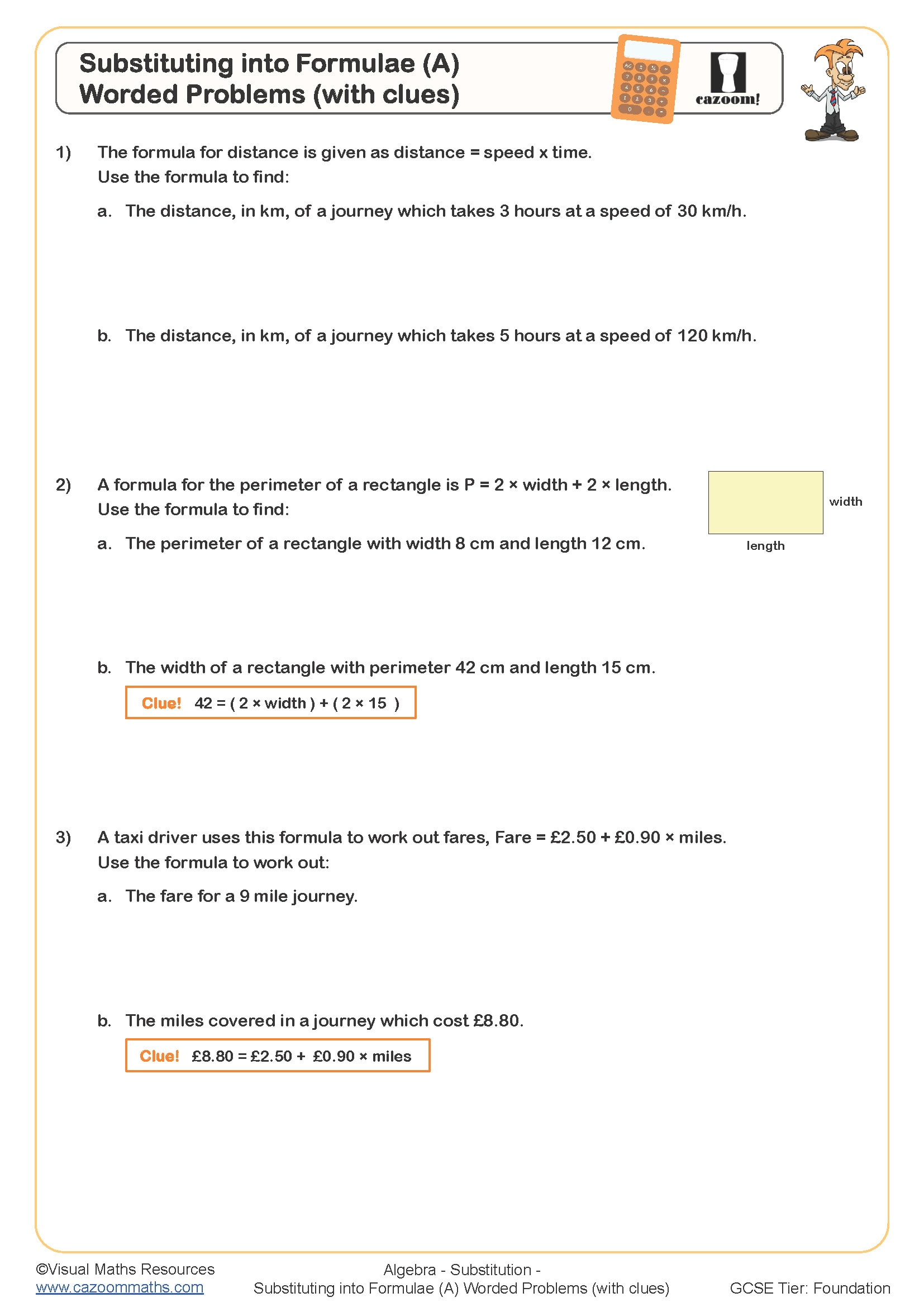
Substituting into Formulae (A) Word Problems
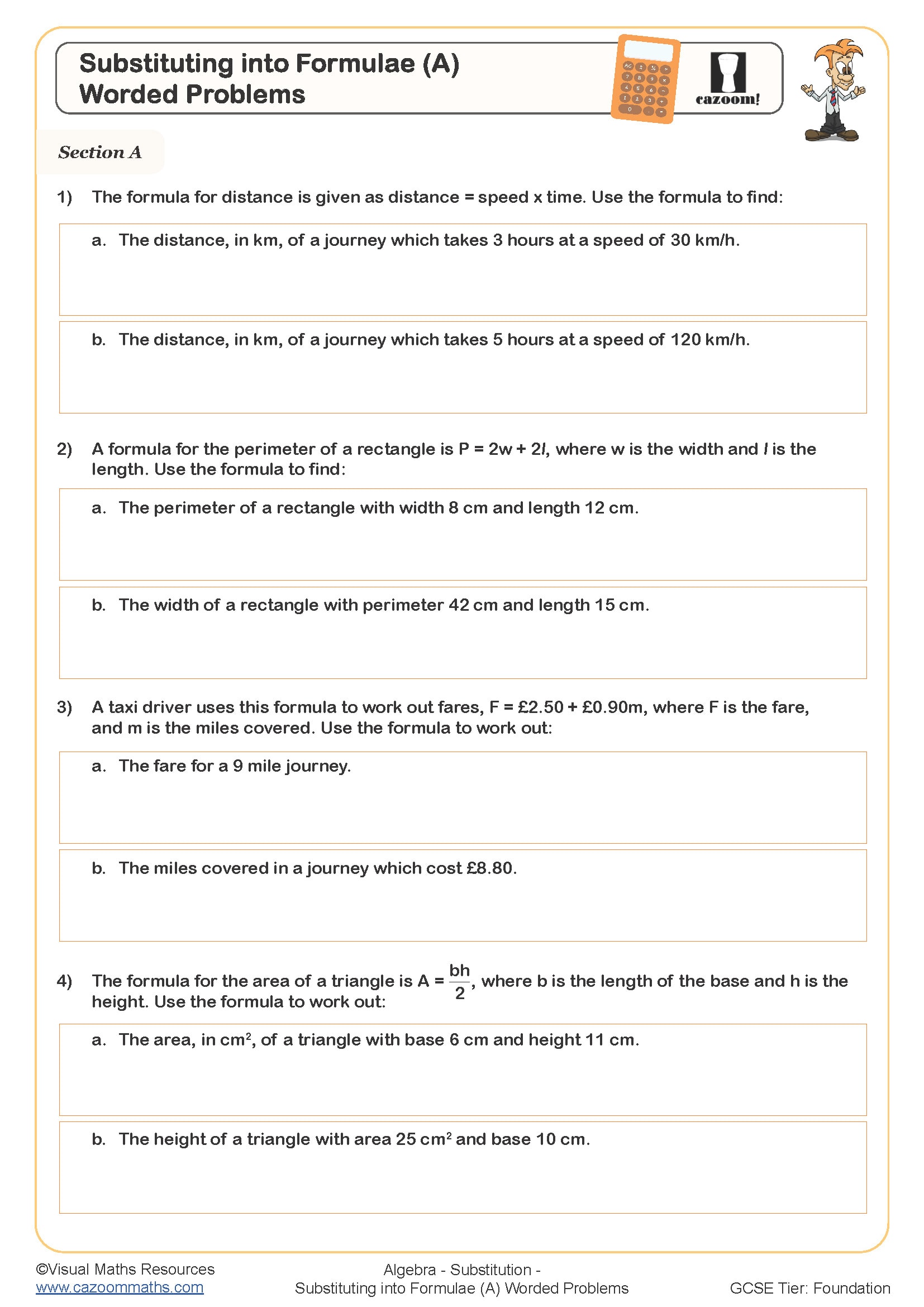
Substituting into Formulae (B)
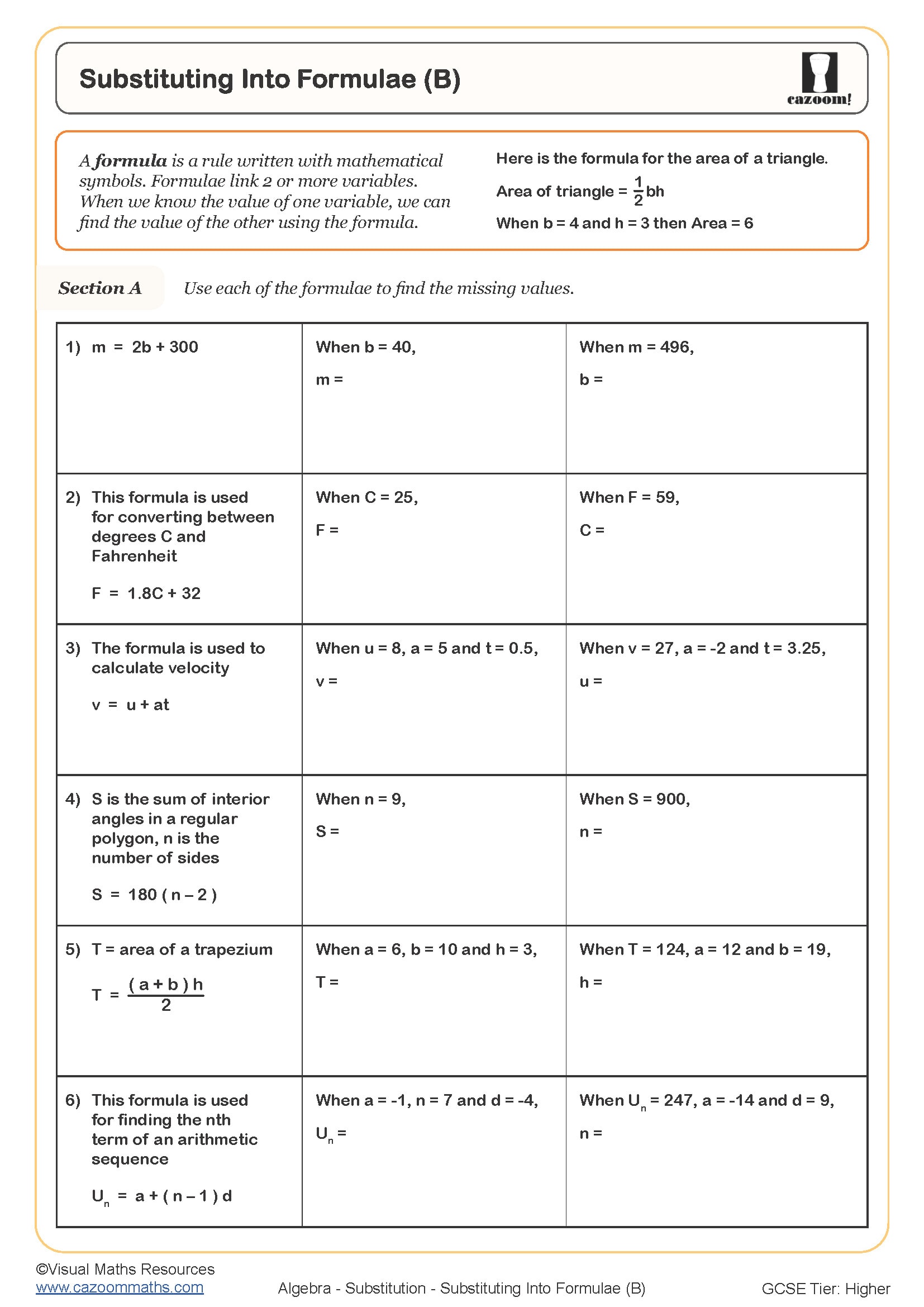
Substituting into Quadratic Expressions
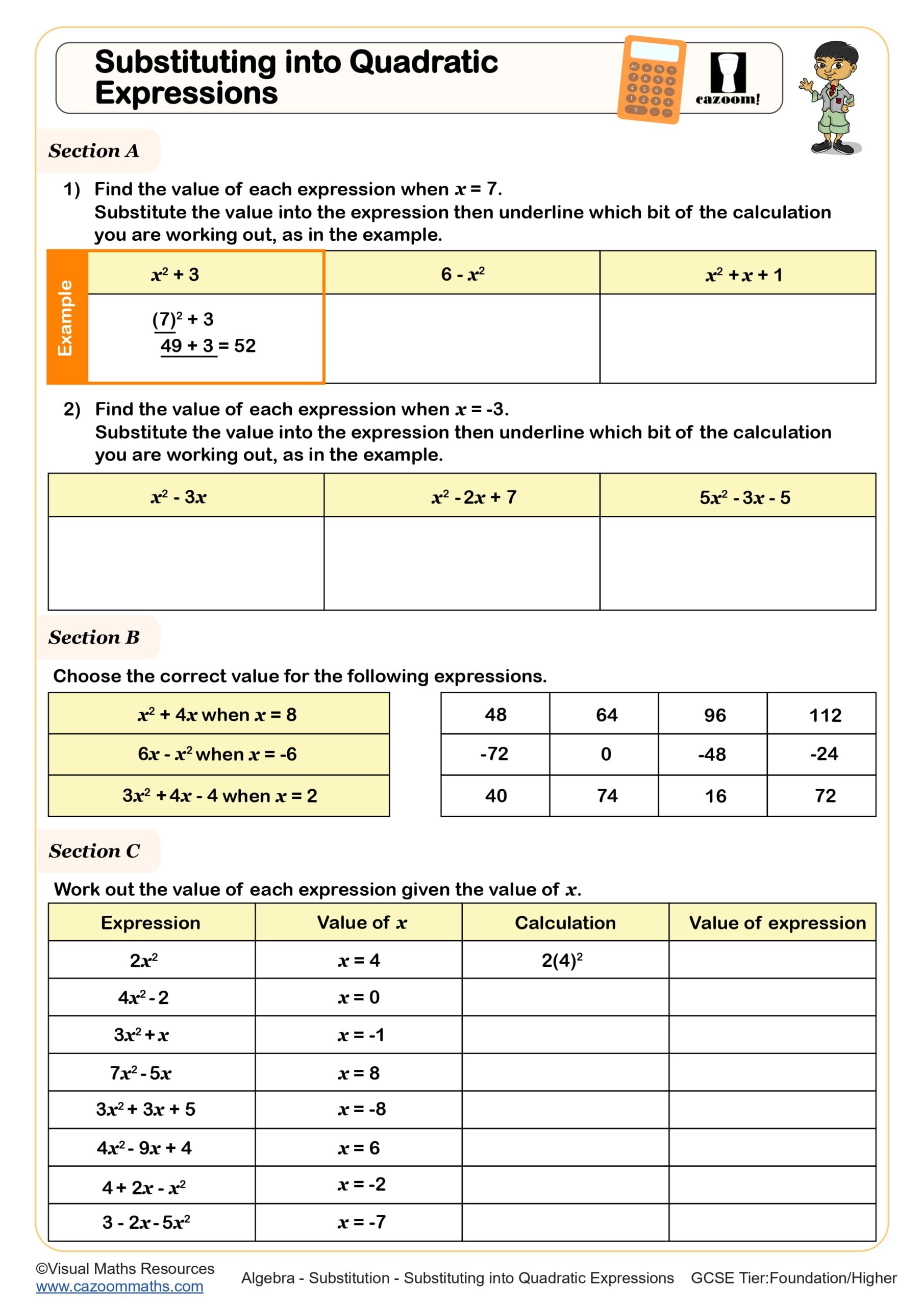
Substitution Builder (A)
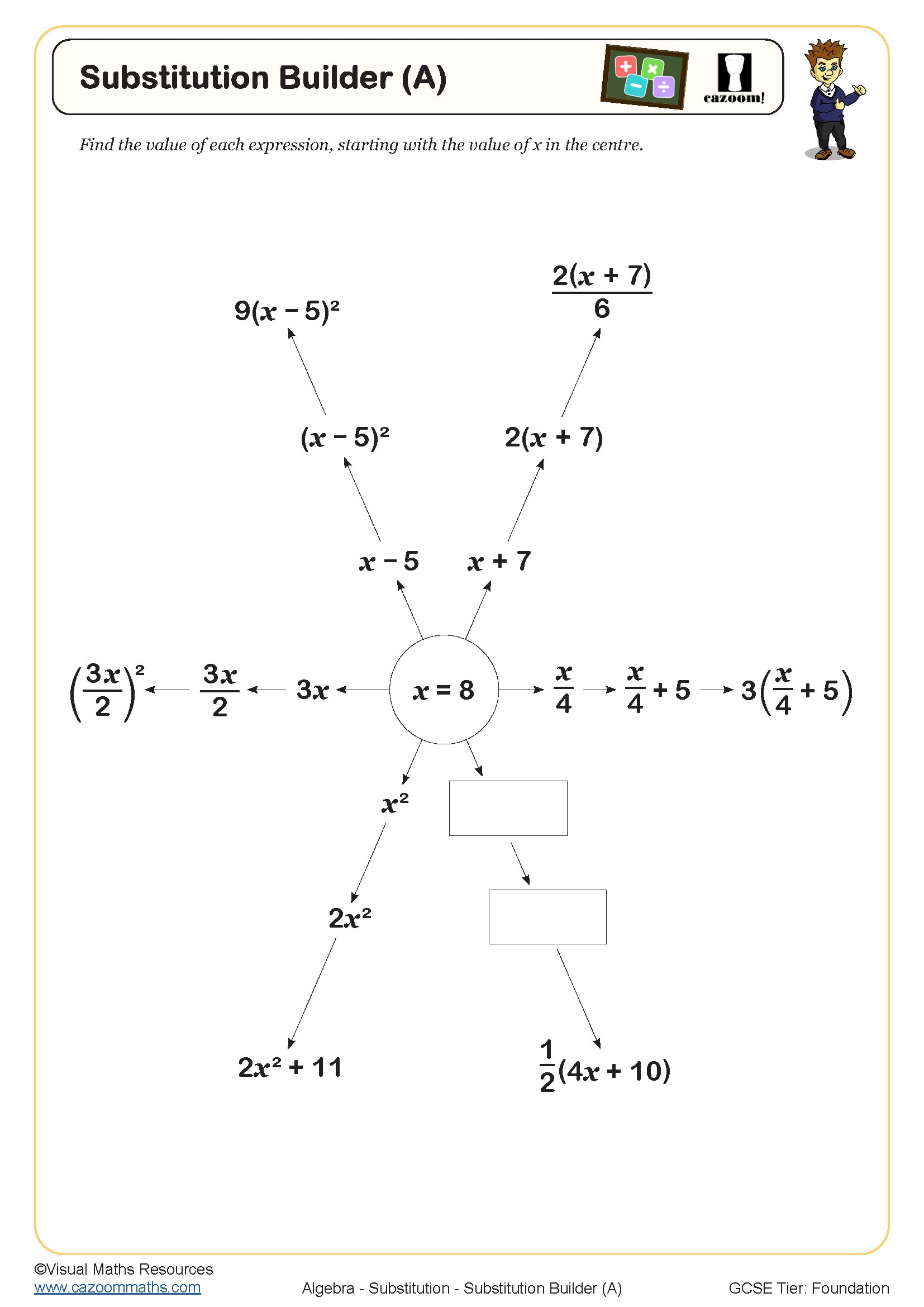
Substitution Builder (B)
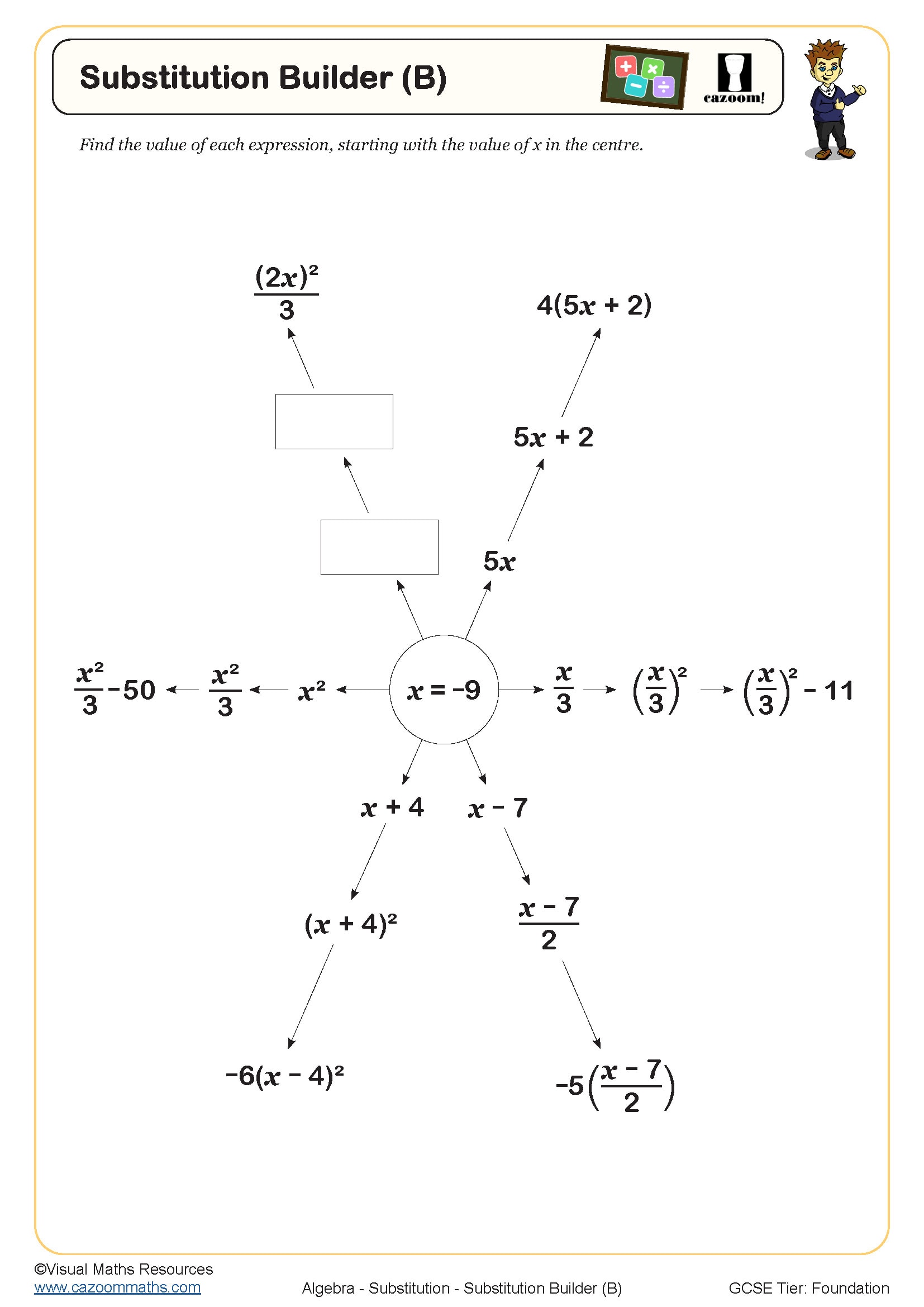
Substitution Builder (C)
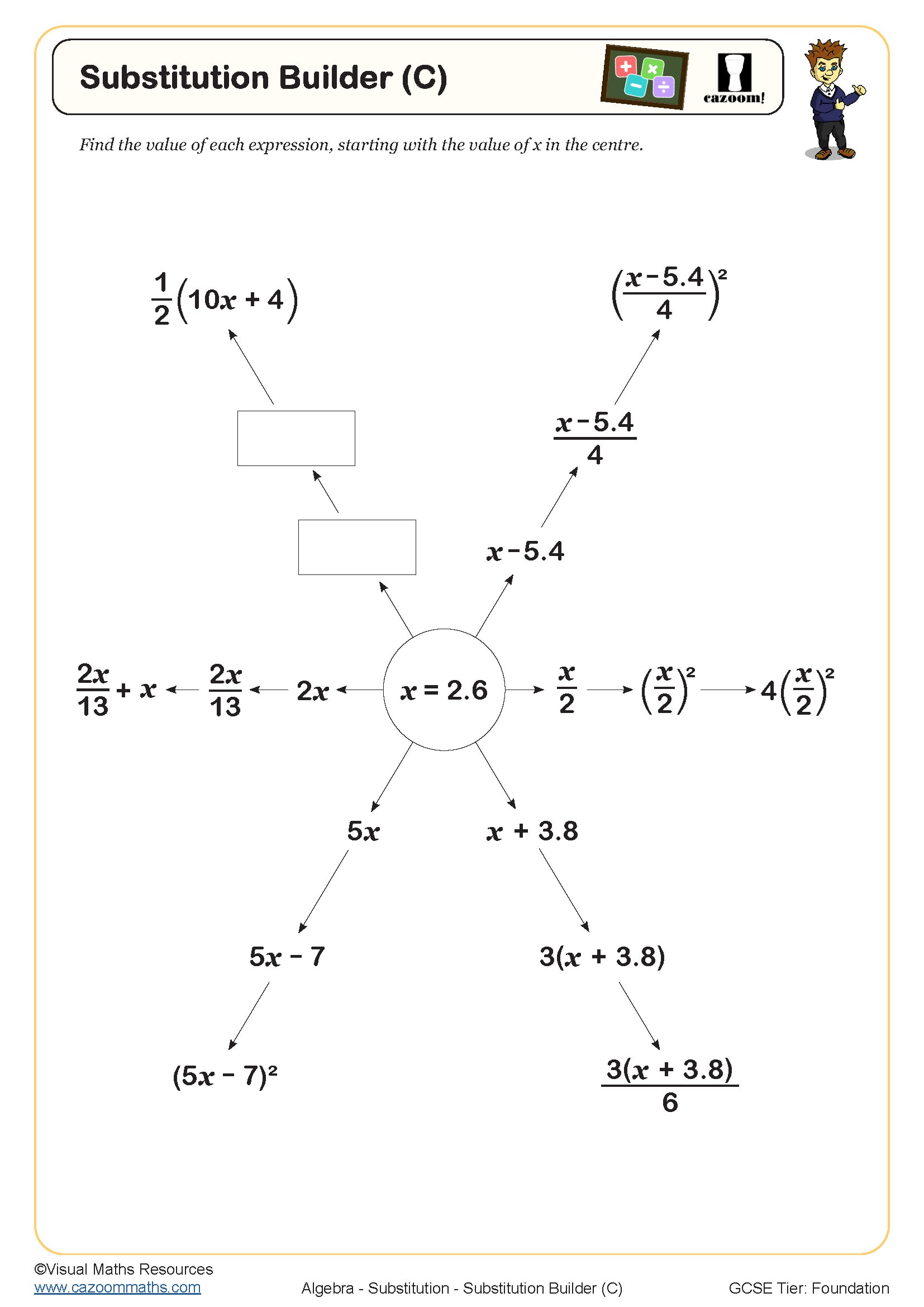
Substitution Magic Squares
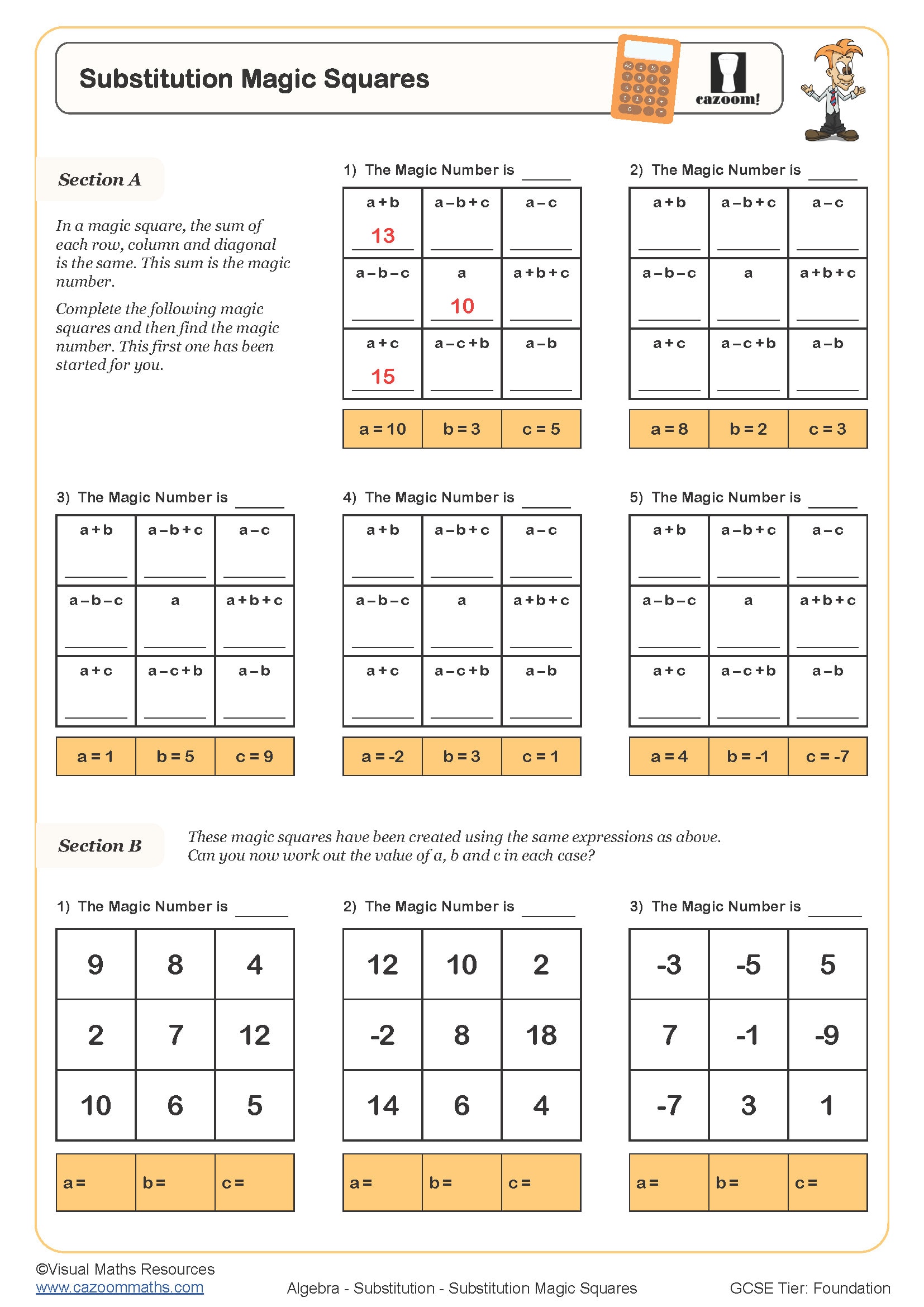
Writing Formulae
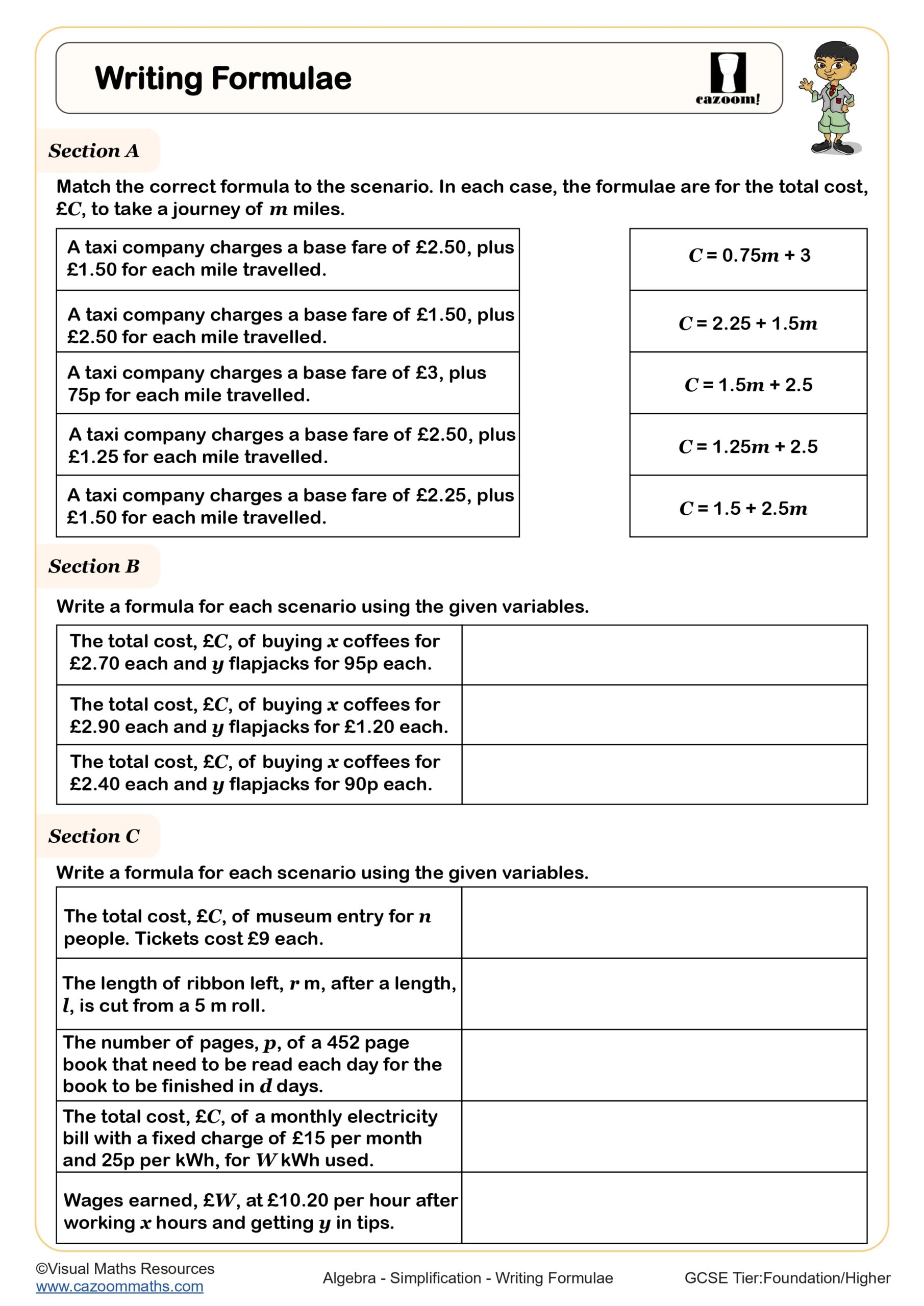
How Substitution Practice Builds Mathematical Fluency in Year 9
Year 9 students develop crucial links between abstract algebra and numerical calculation through regular substitution work, which enables them to identify fundamental patterns that support equation-solving, graphing, and functional relationships. Students need to use the systematic order of operations to solve problems while handling negative numbers and indices in this skill, which connects basic arithmetic to advanced mathematics. The process of substitution requires students to handle multiple variables and maintain accurate calculations and interpret algebraic symbols, which helps build their mental abilities for future advanced math subjects. Learning substitution first enables students to handle simultaneous equations and quadratic expressions and formulae manipulation with greater ease. The worksheets enable students to develop automaticity through structured repetition while maintaining both interest and diversity in their learning activities.
Specific learning benefits include:
• Develops fluency with negative number operations
• Strengthens order of operations understanding
• Improves algebraic manipulation skills
• The system improves both the speed and accuracy of problem-solving operations.
• The process of solving simultaneous equations requires the following steps to establish a solution.
• Builds systematic working methods
• Supports GCSE foundation preparation.
What's Included in Year 9 Algebraic Substitution Resources
The worksheets start with basic numerical substitution before moving to pictures and finish with abstract algebraic thinking through a structured developmental progression. The collection includes basic single-variable problems alongside more complex multi-step problems that include brackets and indices, and fractions. The answer keys for each worksheet present complete, step-by-step work, enabling students to follow the solution development process. The method enables teachers to determine individual starting points for students while maintaining high expectations for all students.
The worksheets in this collection include:
• Substituting into Expressions (A) — introduces basic single-variable replacement with positive integers
• Substituting into Expressions (B) — progresses to multiple variables and mixed operations
• Substituting into Expressions using Negative Numbers — develops fluency with negative value substitutions
• Substituting into Formulae (A) (With Clues) — applies substitution to real-world formulae with guidance
• Substituting into Formulae (A) Word Problems — translates written scenarios into algebraic calculations
• Substitution Builder (A) — scaffolds skills through incremental complexity increases
• Substitution Builder (B) — extends practice with brackets and order of operations
• Substitution Builder (C) — challenges students with indices and fractional values
• Substitution Magic Squares — engages learners through puzzle-based substitution practice
• Substituting into Quadratic Expressions — tackles squared terms and polynomial evaluation
• Writing Formulae — reverses the process to create algebraic expressions
• Substituting into Expressions (C) — combines advanced techniques for GCSE preparation
• Substituting into Formulae (B) — master complex multi-step formula applications
Why Secondary Maths Teachers Trust These Substitution Materials
The resources hold value for teachers because they present ready-to-use materials which can be applied directly in their teaching practice for classroom activities and homework assignments, and intervention planning. The design of the visual layout helps students with learning difficulties by minimising mental effort while providing challenging questions for advanced students who do not need additional resources. The format of answer sheets helps teachers save time during marking because it matches the whiteboard presentation of solutions, which enables them to detect student misunderstandings more easily. The uniform structure of worksheets helps students develop consistent learning habits because it eliminates the need to learn various formats, which enhances their study efficiency. The materials from Cazoom Maths were created with actual teaching challenges in mind because they address budget constraints for photocopying, work with diverse student abilities and help teachers manage their time effectively.
Practical Applications of Substitution Skills Beyond the Classroom
Substitution skills translate directly into formula use across science, technology, and everyday calculations. Students apply these techniques whenever they work with equations in physics, chemistry, or computing contexts.
• Computing mobile phone bills using tariff formulas
• Converting currency for international travel planning
• Calculating distances using speed and time relationships
• Determining cooking quantities when scaling recipes
• Understanding physics formulas in science lessons
• Programming variables in computer coding projects
• Analysing sports statistics and performance metrics
• Working out compound interest for savings accounts